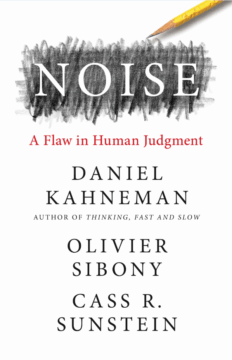Steven Brill in the New York Times:
 In a study of the effectiveness of putting calorie counts on menu items, consumers were more likely to make lower-calorie choices if the labels were placed to the left of the food item rather than the right.
In a study of the effectiveness of putting calorie counts on menu items, consumers were more likely to make lower-calorie choices if the labels were placed to the left of the food item rather than the right.
“When calories are on the left, consumers receive that information first and evidently think ‘a lot of calories!’ or ‘not so many calories!’ before they see the item,” Daniel Kahneman, Olivier Sibony and Cass R. Sunstein explain in this tour de force of scholarship and clear writing. “By contrast, when people see the food item first, they apparently think ‘delicious!’ or ‘not so great!’ before they see the calorie label. Here again, their initial reaction greatly affects their choices.” This hypothesis is supported, the authors write in a typically clever aside, by the “finding that for Hebrew speakers, who read right to left, the calorie label has a significantly larger impact if it is on the right rather than the left.”
These inconsistencies are all about noise, which Kahneman, Sibony and Sunstein define as “unwanted variability in judgments.”
More here.
